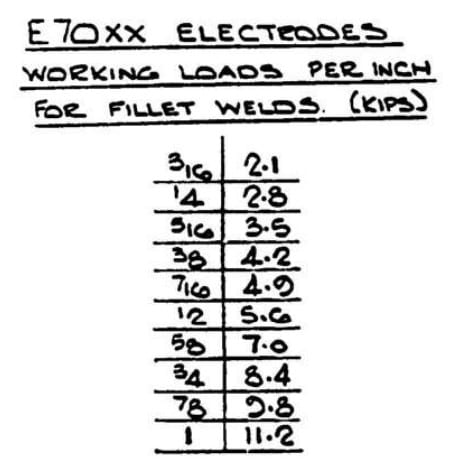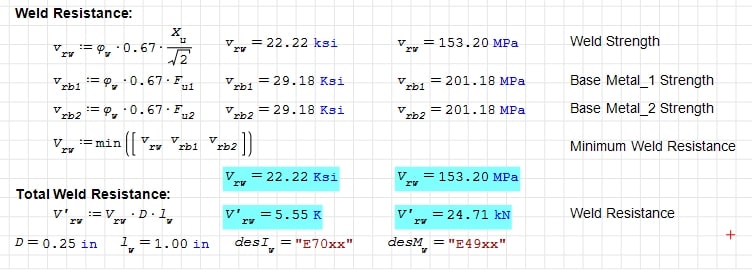I am reviewing the capacity of an existing building in Canada, built in 1965.
The connection welds were designed for the following working load weld capacities (screenshot below taken from the original drawings. These seem to be much lower than what an E70XX weld should be capable of, even considering SLS design.
For e.g., a 1/4 inch weld should be more like 3.7 kip/in.
Any ideas of why these working load weld capacities are lower?

The connection welds were designed for the following working load weld capacities (screenshot below taken from the original drawings. These seem to be much lower than what an E70XX weld should be capable of, even considering SLS design.
For e.g., a 1/4 inch weld should be more like 3.7 kip/in.
Any ideas of why these working load weld capacities are lower?


